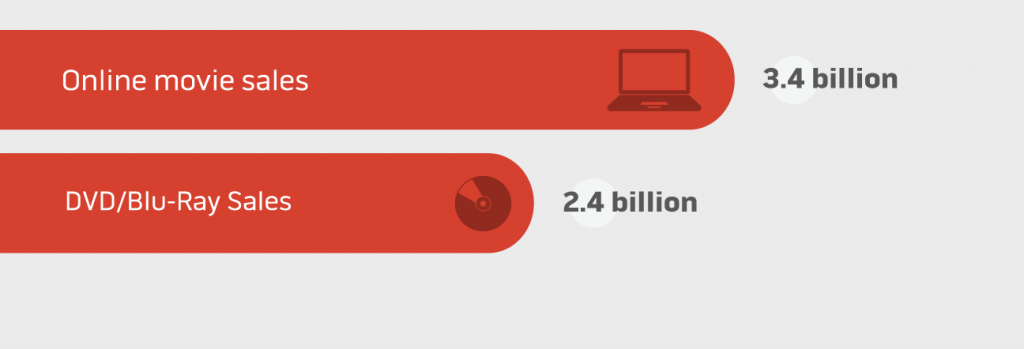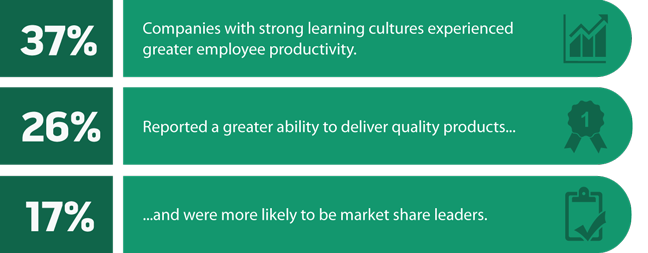
Still using DVDs to deliver video-based training? You’re not alone; we get a lot of requests DVDs. For some people, it really is the most appropriate way for them to deliver training to their employees. But other people choose DVDs because it’s what they know and because they don’t yet understand the advantages of e-learning courses delivered online through a learning management system (LMS).
Both DVDs and e-learning courses are essentially “video-based” training, but after that there are many significant differences. We’re often asked if it’s better to use eLearning or DVDs in a training program. At times, people who currently use DVDs ask us “why should I invest in eLearning at all?”
There are a number of reasons, really. We’ll try and address a few of them and help you decide if e-learning courses are right for your training program.
Convergence Training is a training solutions provider. We make workforce training courses in both DVD and e-learning formats, and also make learning management systems (LMSs) and custom training solutions. Contact us to learn more.
While you’re here, download our free Guide to Effective Manufacturing Training, free Guide to Effective EHS Training, free Guide to Online MSHA Training, and/or free Guide to Writing Learning Objectives.
Modern Information Formats
The best training programs take advantage of a blended learning approach that supports classroom-based learning, hands-on instruction, and computer-based training. Many training programs have long relied on DVDs to provide at least a small part of their classroom-based or computer-based training instruction. Unfortunately, it now appears that DVDs are on their way to becoming as obsolete as VHS tapes.
Physical forms of information are quickly being replaced by digital equivalents, stored on computers or accessed via the Cloud. VHS tapes, cassette tapes, vinyl LPs, and DVDs – each, at one time, the dominant media format of its day. How often do you use any of these now? Sure, you may still be using DVDs for training at work, but for how long? When will people stop making DVD players? Truthfully, that day may be years away, but make no mistake, the future of media is in digital formats stored on your computer or streamed from the cloud.

In 2012, Americans watched 3.4 billion movies online, and only 2.4 billion by means of DVD and Blu-Ray. [1]
eLearning or DVD: a Few Reasons Why e-Learning is Better
No Scratches, Cracks, or Skips
If you have a lot of DVDs, we bet you’ve got at least one that skips or doesn’t play because it’s scratched or broken. It’s an unavoidable part of relying on a fragile object to deliver data, and the cost of replacing damaged DVDs year after year begins to add up. Computer-based e-Learning courses never scratch or shatter and never need to be replaced.
Easy Updates
What do you do when you need to update your training content? If your training is on a DVD, you have to buy a new one. e-Learning courses, on the other hand, can be easily updated. This is handy if your training is based on a regulation that changed, if you’ve modified an SOP, or if you simply want to change your training content.
More Delivery Options
e-Learning gives you a lot of options. People can take their training from anywhere—in the training room as a group, at their own computers, or even at remote locations. This flexibility can help you train your workforce quickly, with fewer scheduling hassles, at less training-related costs, and without interrupting normal work flow because workers can complete their training during their own down times.

Percentage of American Corporations using e-Learning for training. [2]
More Interactive Training
Most DVDs only let you play and pause, making it difficult or impossible to navigate in a non-linear manner throughout the different parts of the training. Computer-based e-Learning courses give your employees the chance to go at their own pace, allowing their learning styles to determine the pace of the training. With this, e-Learning also opens the possibility of interactive exercises to assess your learner’s understanding of the topics.
Navigation buttons allow workers go to back and next with a click of a mouse, and disc menus allow them to jump to any screen. Some training modules even take advantage of complex, non-linear, “branching” capabilities in which each learner can create his or her own learning experience—these are especially helpful when creating problem-solving and/or scenario-based training activities.
Not only that, but by “chunking” (delivering information in smaller units), employees are more likely to retain and remember the information they’ve been shown, [3] which in turn creates higher retention overall and puts higher value on the actual money you’ve spent on your e-Learning materials. [4]

e-Learning increases retention rates by 25-60% by allowing the student to have more control over the learning process. [5]
Coordinating Assignments, Repeated Training, and Refreshers
The date at which training is completed is often important. You may need training to be completed by a certain date, for example. And then maybe your workers will have to complete that training again every year or two.
This is difficult to manage with DVDs — all of the coordination is your responsibility. With training delivered online, however, the learning management system can handle a lot of this for you. Inform workers of due dates, send notifications to workers when a due date is approaching or when training must be completed again, send reports to department managers when their workers have training to complete, and more.

e-Learning can help companies boost productivity by 50%. Every $1 spent in eLearning results in $30 of productivity. [6]
Recording and Reporting Training
e-Learning also holds an advantage over DVDs when it comes to keeping training records and providing compliance reports. DVD training sessions require manually logging the training event and storing those records in file cabinets or in a spreadsheet on your computer. Some companies have special databases where they can store training data, but recording it is in no way automatic, and it’s often quite difficult to retrieve in a format useful for reporting.
With e-learning courses delivered online or via an LMS, these problems are minimized or removed entirely. These applications automatically create and store records of completed training. When you need to know if a worker is done with one activity or how that worker is doing in terms of completing all his or her assigned training, it’s as easy as running a quick report. The same is true if you want to know how all the members of a given department are doing on their training.
In fact, you can even have the system automatically send reports to you or other coworkers on a recurrent basis. And of course, those reports make it easy for you to present data about your training programs to regulatory agencies or other companies performing audits on your training (and that’s a relief).

Companies that use online learning technology achieve an 18% boost in employee engagement. [7]
Creating a Strong Learning Culture
If you’re familiar with safety, you know that one of the key drivers of a safe work culture is when management clearly values safety. The same is true of training—if management clearly demonstrates to employees that training is important, employees will take training seriously, and training will be more effective. One way for management to show employees that training is important is by using the best, most effective tools, including e-Learning content delivered through an LMS.
Want to strengthen the learning culture at your organization? We’ve already given you many reasons above to incorporate computer-based e-Learning training materials, but hey, don’t take our word for it — there is plenty of research that demonstrates how having a strong learning culture will improve productivity, quality, and market share at your company. [8]

What are your own thoughts? Do you use e-learning now? Will you in the future?
References
- CNN Money
- Srivastava, E., Agarwal, N. (2013). E-learning: New trend in Education and Training, International Journal of Advanced Research (2013), Volume 1, Issue 8.
- Bachman, K. (2000). Corporate e-Learning: Exploring a New Frontier, WR Hambrecht + Co., p 6.
- Srivastava, E., Agarwal, N. (2013). E-learning: New trend in Education and Training, International Journal of Advanced Research (2013), Volume 1, Issue 8.
- e-Learning – A Strategy for Maximixing Human Capital in the Knowledge Economy
- The Value of Training – IBM Corporation (2008)
- 3 Reasons to Implement e-Learning in Your Organization – MWF Enterprise (2013)
- Building a Borderless and Agile Workplace – Bersin & Associates (2012)

Wow! Great post, Jeff. You make some great points here about the benefits of delivering training via elearning. I especially like the part about creating a strong learning culture. Will share on our social media!
I’m the mobile equipment trainer for my company at all new hire orientation we put all employees thru forklift training. We use Powerpoint for this. I found the short clip on you tube from your Program on the traingle and load center. I’m interested in the whole video. Can someone contact me on this.
Karen, we’re glad you found the sample from our forklift safety elearning course helpful. I’ve forwarded your inquiry on to someone in our Sales department and they should get a hold of you soon.